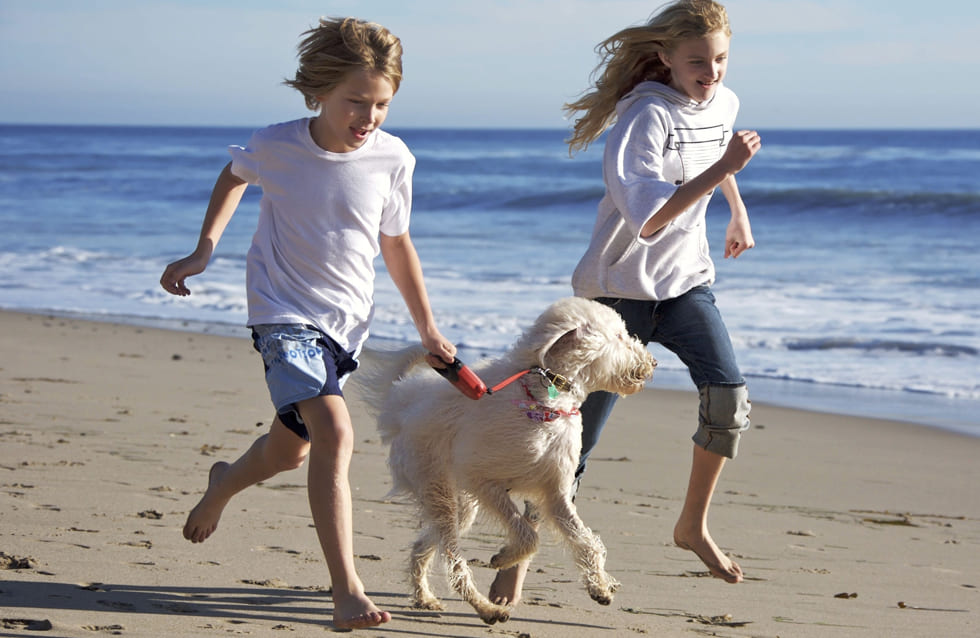
With two-thirds of children in the U.S. failing to meet national physical activity guidelines, kinesiologists at the University of Massachusetts Amherst have been looking at the impact of the family dog on the exercise habits of kids.
Could having a canine best friend get kids on their feet and help bring them more in line with the minimum recommendation of 60 minutes of moderate to vigorous physical activity every day?
A preliminary UMass Amherst study in 2022, reported in a recent issue of the Journal for the Measurement of Physical Behaviour, tested and validated a new approach for measuring dog-facilitated physical activity among kids.
The study, involving 12 children, found that about 20% of their daily physical activity came from time in close proximity with the family dog.
Now a larger study, aimed at including a more diverse population, is underway.
The UMass Behavioral Medicine Lab, directed by exercise scientist Katie Potter, studies ways to help people become more active, with a current focus on children and dogs.
An assistant professor of kinesiology in the School of Public Health and Health Sciences, Potter is looking for families with kids and one or more dogs to wear ActiGraph accelerometers, with a Bluetooth feature that measures proximity, as they go about their routine life.
This time, there is an option for participants to complete the weeklong study remotely, allowing families outside of Western Massachusetts to take part.
“There are so many ways we might leverage the human-dog bond to promote physical activity in kids, but first we need to understand how much physical activity dog-owning kids get with their dogs,” Potter says.
Interested families can fill out a screening survey to see if they qualify to participate.
The study will include children between 7 and 10 years old, and a dog who has been with the family at least six months.
“Our preliminary study was the first time that this type of research had been done specifically quantifying physical activity with the dog and the kid in proximity together,” says Colleen Chase, lead author of the recent paper and a doctoral student in Potter’s lab.
“We’re interested in replicating that study to see whether that 20% value holds at a significant sample size of participants.”
Research has shown that children get more exercise when it is enjoyable, motivational and involves social interaction.
“If a child has a dog and is bonded with the dog, that’s going to lead to greater enjoyment of whatever activity they are partaking in. And having a dog is a form of social support,” says Chase, who is leading this research study as part of her doctoral dissertation.
“So, we see the way this lines up nicely with what other studies have shown is going to promote kids being more active.”
Chase says if the research continues to show that dogs have a positive impact on the physical activity of children, researchers can look for ways to involve kids who don’t have a family dog.
“There’s a financial and time burden associated with pet ownership, and we acknowledge that,” Chase says.
She could envision dog-walking programs in animal shelters or after-school programs involving dog play to expand access to the benefits of hanging out with a dog.
“This is a pretty concerning issue in the United States right now,” Chase says of physical inactivity among kids. “That’s why we’re trying to get creative with methods to address this. It’s a very wholesome line of research. You know, we’re working with kids. We’re working with dogs. But we do have these larger, significant health problems that we are working to address through this research.”
Source: https://www.sciencedaily.com/